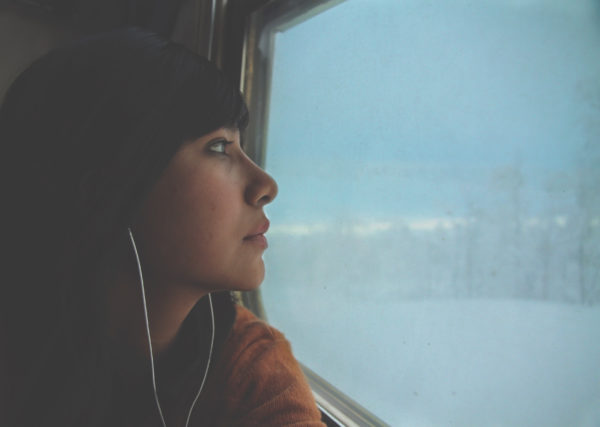Laura Luna Castillo is a multimedia artist from Mexico that currently resides in Prague. She began her artistic practice through photography, later developing an interest in video and film. While working with these mediums, she began to experiment with other forms of artistic expression that allowed her to investigate the mechanisms of memory, narratives and imagination. Within these explorations, sound became a central element of her practice, combined with her passion for machines, repetition, textures, generative narratives and the complexities of memory and associations. She was nominated for SHAPE by MeetFactory.
Can you introduce yourself and your work?
I’m interested in the interaction of different materials and processes in order to explore the concept of melancholy and the mechanism of memories, especially when motion, time and chance are the main elements affecting an object or a visual/sonic composition. Through these explorations I have always been drawn to machines and mechanisms, either when they conform to a piece on their own or in the way they affect the construction or deconstruction of objects and spaces.
The sound in these processes has always been a fascinating element to me, and I try to capture as many samples as I can when I find them in different places or in the machines that I’m working with. When I start to think about a composition, I choose the samples and field recordings according to the images they trigger in my mind, and I compose them according to these narratives.
You mentioned beforehand that you started making music after an experience that made you aware of sound as a powerful enhancement to memories and narratives. Can you talk about this and why was its sonic quality such a transforming experience?
Before I started making music, I had always been very visual – remembering things and places or imagining situations mainly through visual stimuli. I hadn’t paid so much attention to how places sounded. The experience that made me very aware of sound had to do with momentarily not being able to see well, and being very afraid of that. In this state of fear, I started to focus on the sounds around me in the utmost detail, and as I could hear them coming from every direction, I could also visualise where they were coming from. It affected me greatly because I was traveling visually and mentally by tracing their origin.
Since this experience, I’ve begun to pay attention to other stimuli as well, such as smell, and it made me become aware of many simple and complex processes that are constantly happening in the background simultaneously, enriching the way I feel about spaces and atmospheres, as well as the way I recall and imagine them. When it comes to composing new tracks and gathering sounds, I enjoy finding the source of very faint sounds and gathering them, for example the sounds of electric generators or neon lights. It has helped me to consolidate the way I work by composing through narratives and visual pathways.
You mentioned that you make music by imagining an atmosphere, a certain vibe.
I usually get inspired by the stories I have read and by dreams, because of the way that reality and memories get warped and distorted to form impossible spaces and situations. These are the qualities I like to use while making music – twirling loops and samples, layering them on top of each other until they cancel each other out or harmonise. Like in dream narratives, I like to use familiar sounds that remind me of a space or a feeling and then distort or loop them in fragments of time, such that they lose their original context and become “impossible” sounds or sources of sounds. I choose the sounds and samples according to this familiarity, and I gather them from different sources such as TV commercials, toys, motors, field recordings, etc. When I begin to loop them I start with the ones that evoke an atmosphere most clearly or familiarly. From there I keep layering them following a sort of elusive narrative.
You work with various objects, field recordings and deconstructed toys. Is your music conceptual in that respect (since you also studied multimedia)?
Yes, I would say it is conceptual and it has a lot to do with my interest in relating sensations to materials. Through multimedia, I try to think and reach the many dimensions that conform to the sounds and their sources, and to think of how the sounds affect the way I feel about them when hearing them removed from their contexts – in the recorder or after I’ve looped them. Objects that make sounds are very interesting to me in that respect; to be able to see the source in a space, to touch and even to create my own objects and discover their sonic qualities. It has to do with the complexity of the sounds and the way different temporalities can be explored in space and through objects.
Interview by Lucia Udvardyova
